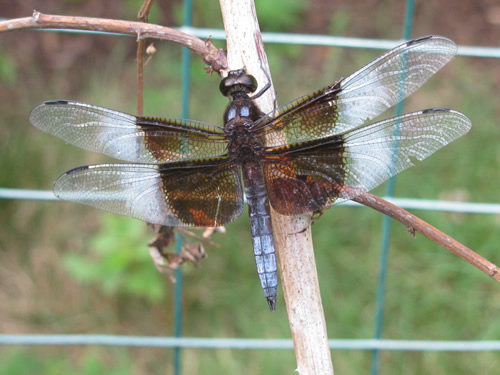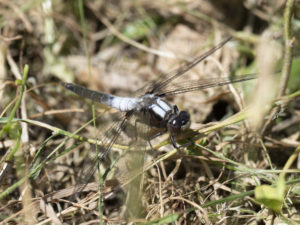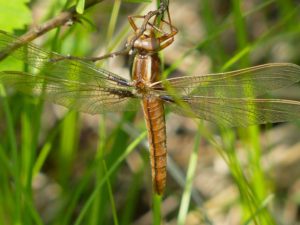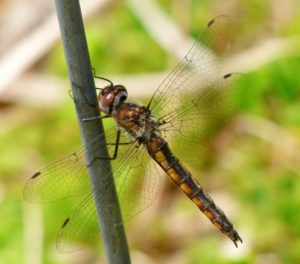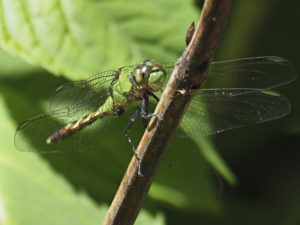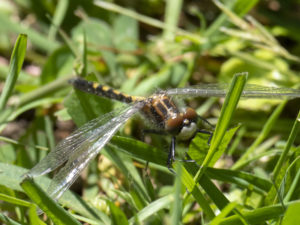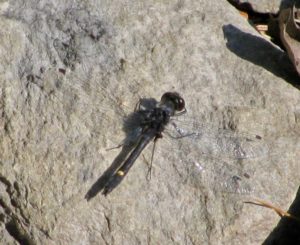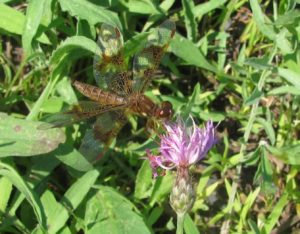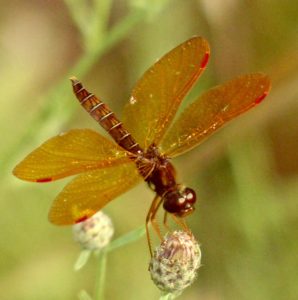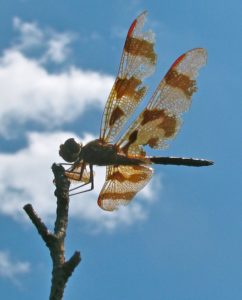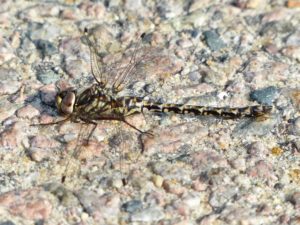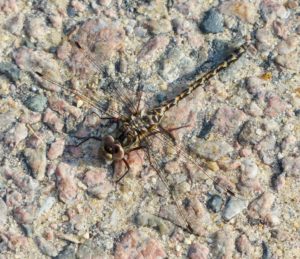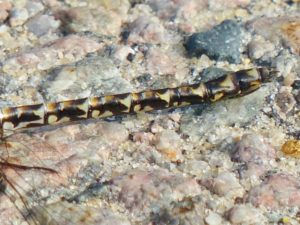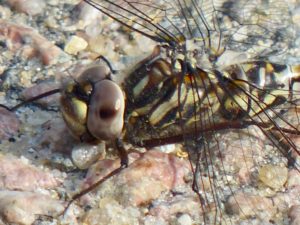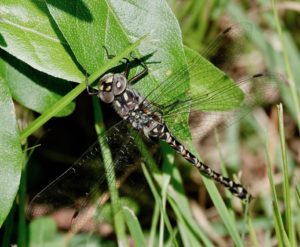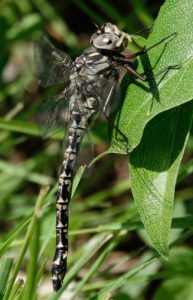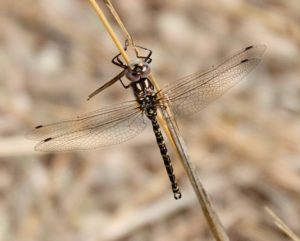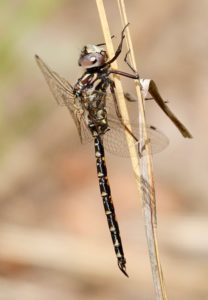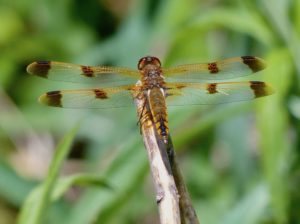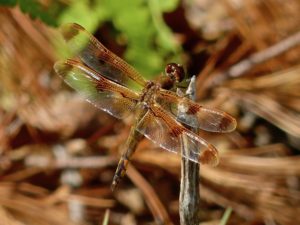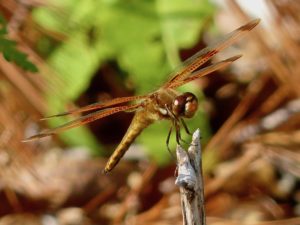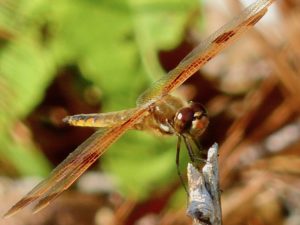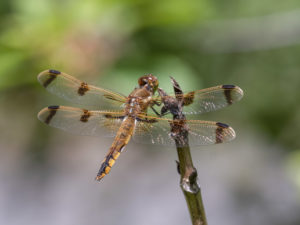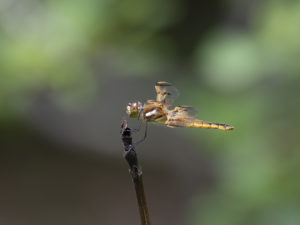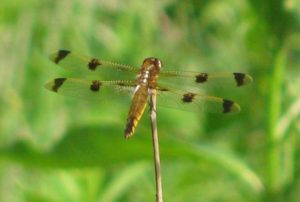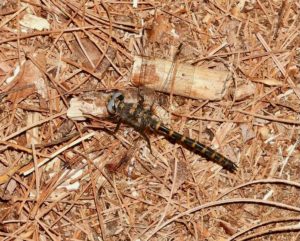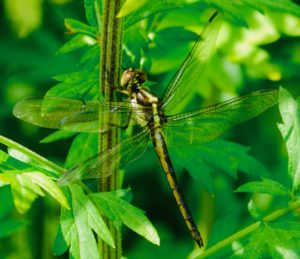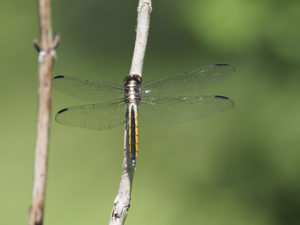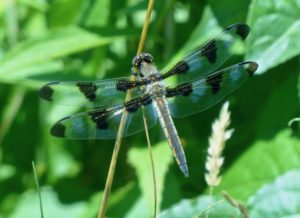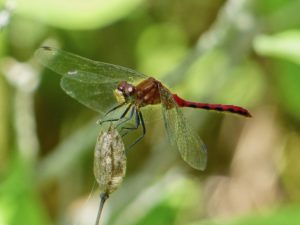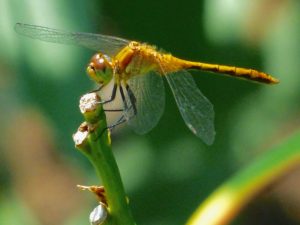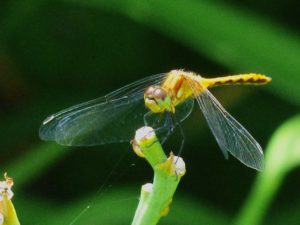Sightings – Dragonflies
Observer: Paul Lauenstein
Observation Date: 7/4/13
Observation Time: 8:30 a.m.
Observation Location: Gavins Pond area
Common Name: Band-winged Meadowhawk dragonfly
Scientific Name: Sympetrum semicinctum
More Information: Wikipedia
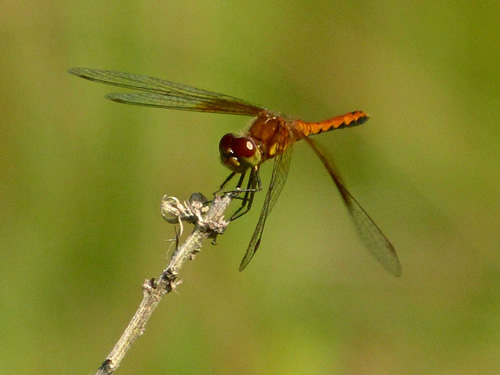
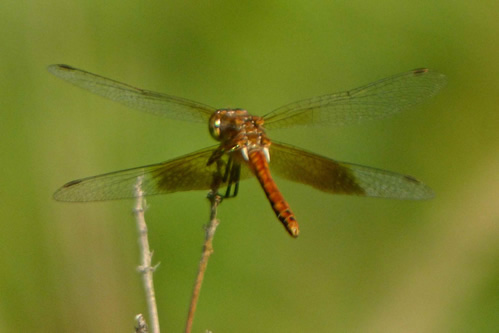
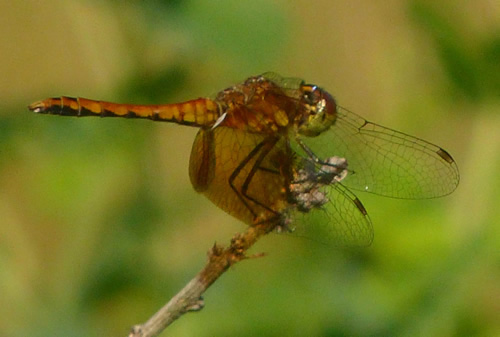
Observer: Paul Lauenstein
Observation Date: 7/19/10
Observation Time: 5:20 a.m.
Observation Location: Gavins Pond soccer field parking lot
Common Name: Blue Dasher dragonfly
Scientific Name: Pachidiplax longipennis
Comments: Female is brown with red eyes and yellow markings. Male is blue with green eyes.
More Information: Wikipedia
Female:
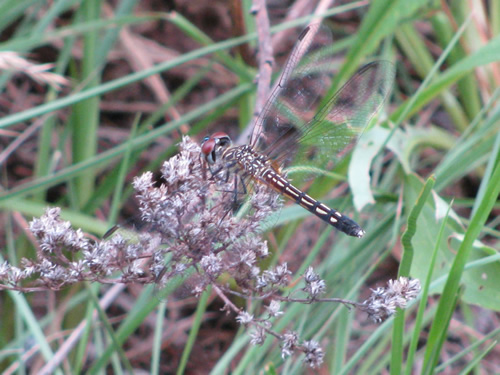
Male:
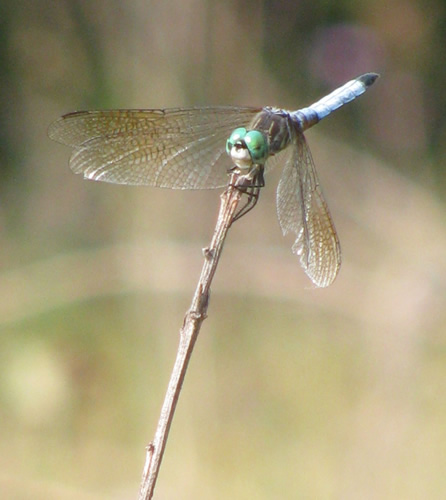
Observer: Paul Lauenstein
Observation Date: 7/15/13
Observation Time: 4:15 p.m.
Observation Location: Gavins Pond area
Common Name: Blue Dasher dragonfly (female)
Scientific Name: Pachidiplax longipennis
Comments: The male has a blue abdomen, hence the name.
More Information: Wikipedia
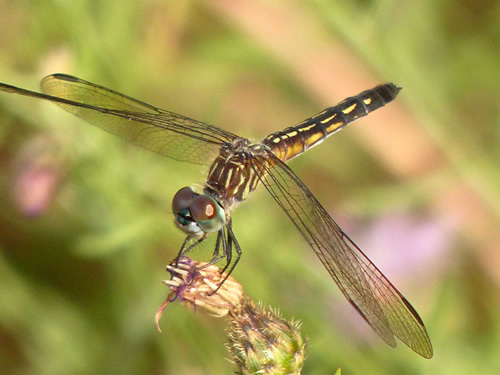
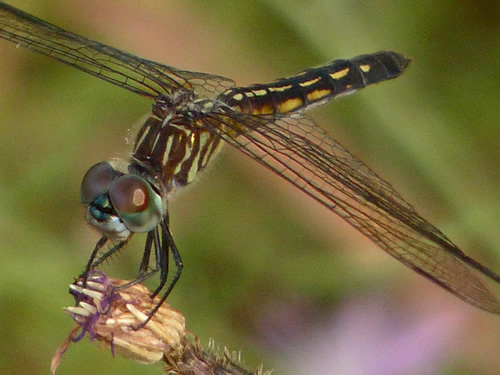
Observer: Paul Lauenstein
Observation Date: 7/8/13
Observation Time: 5:10 p.m.
Observation Location: near Gavins Pond Dam
Common Name: Blue Dasher dragonfly (male)
Scientific Name: Pachidiplax longipennis
More Information: http://www.cirrusimage.com/dragonfly_blue_dasher.htm
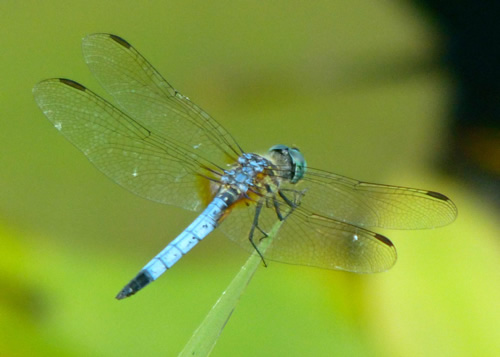
Observer: Paul Lauenstein
Observation Date: 8/30/10
Observation Time: 8:30 a.m.
Observation Location: Gavins Pond Road (bridge near soccer fields)
Common Name: Canada Darner dragonfly
Scientific Name: Aeshna canadensis
Comments: Canada darner dragonflies are very common in Massachusetts in late summer near sluggish marsh-bordered streams. They typically hang vertically at rest.
More Information: US Army Corps of Engineers: North Hartland Lake
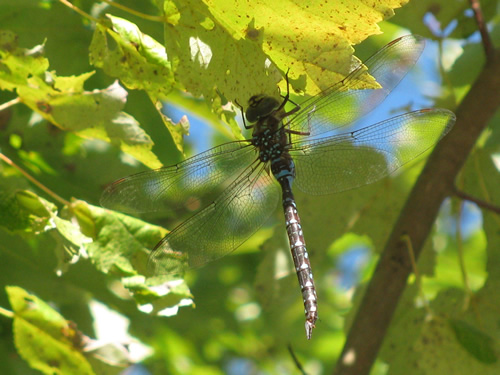
Observer: Josh Simons
Observation Date: 5/31/20
Observation Time: 2:00 p.m.
Observation Location: Moose Hill area
Common Name: Chalk-fronted corporal dragonfly (male)
Scientific Name: Ladona julia
Comments: This species of skimmer dragonfly is typically observed near local marshes and lakes with a decaying organic substrate.
More Information: geocities
Observer: Paul Lauenstein
Observation Date: 6/2/19
Observation Time: 3:10 p.m.
Observation Location: beneath the high tension wires that parallel So. Walpole Street
Common Name: Chalk-fronted Corporal dragonfly (juvenile)
Scientific Name: Ladona julia
Comments: Juveniles of both sexes are light reddish brown, with white shoulder stripes and a black stripe down the middle of the abdomen. This one seemed a bit wobbly, as if it had just emerged.
More Information: Wikipedia
Observer: Paul Lauenstein
Observation Date: 5/26/15
Observation Time: 2:05 p.m.
Observation Location: 4 Gavins Pond Road
Common Name: Common Baskettail dragonfly
Scientific Name: Epitheca cynosura
Comments: This is the most common baskettail within its range, hence the name. The scientific name, cynosura, means dog tail, and possibly refers to the way the cerci at the end of the abdomen curve outward like a dog wagging its tail one way then the other.
More Information: Wikipedia
Observer: Paul Lauenstein
Observation Date: 6/2/11
Observation Time: 2:10 p.m.
Observation Location: Gavins Pond Dam
Common Name: Common Baskettail dragonfly
Scientific Name: Epitheca cynosura
Comments: This is the most common baskettail within its range (eastern North America), hence the name.
More Information: Wikipedia

Observer: Paul Lauenstein
Observation Date: 8/13/13
Observation Time: 1:00 p.m.
Observation Location: Gavins Pond area
Common Name: Common Green Darner dragonfly
Scientific Name: Anax junius
More Information: Idaho Museum of Natural History
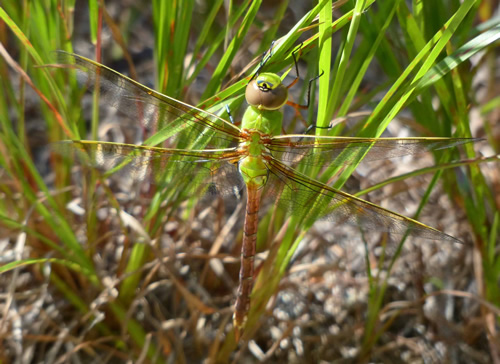
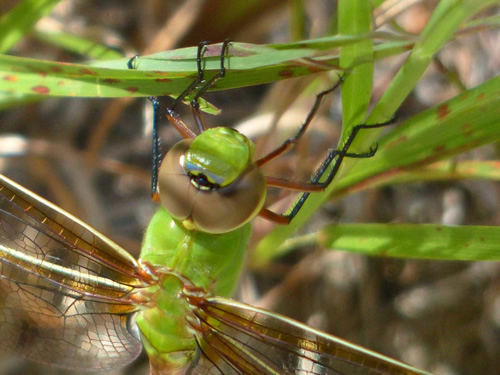
Observer: Paul Lauenstein
Observation Date: 6/25/11
Observation Time: 2:45 p.m.
Observation Location: Gavins Pond Dam
Common Name: Common Pondhawk dragonfly
Scientific Name: Erythemis simplicicollis
Comments: Female (males are blue)
More Information: Insects of West Virginia
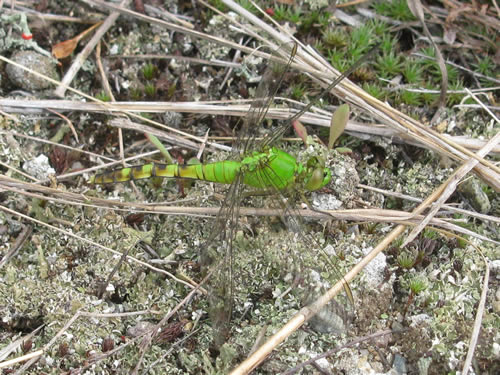
Observer: Josh Simons
Observation Date: 6/14/20
Observation Time: 1:15 p.m.
Observation Location: Moose Hill area
Common Name: Common Pondhawk (or Eastern Pondhawk) dragonfly (female)
Scientific Name: Erythemis simplicicollis
Comments: Pondhawk dragonflies are voracious hunters, but they are completely harmless to humans. Females are green. Males are blue. Females oviposit in flight, hovering low over the water and repeatedly dipping their abdomens into the water to release the eggs.
More Information: North American Insects and Spiders
Observer: Paul Lauenstein
Observation Date: 8/11/10
Observation Time: 8:35 a.m.
Observation Location: Gavins Pond Road (bridge near soccer fields)
Common Name: Common Pondhawk dragonfly (female)
Scientific Name: Erythemis simplicicollis
Comments: Pondhawk dragonflies are voracious hunters, but they are completely harmless to humans. Females are green. Males are blue. Females oviposit in flight, hovering low over the water and repeatedly dipping their abdomens into the water to release the eggs.
More Information: North American Insects and Spiders
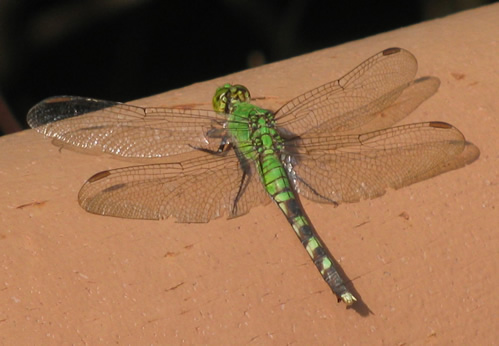
Observer: Paul Lauenstein
Observation Date: 7/9/10
Observation Time: 4:50 p.m.
Observation Location: Gavins Pond
Common Name: Common Pondhawk dragonfly (young male)
Scientific Name: Erythemis simplicicollis
Comments: Males are blue. Females are bright green. Voracious hunter near vegetated ponds and slow streams, but they are completely harmless to humans.
More Information: North American Insects and Spiders
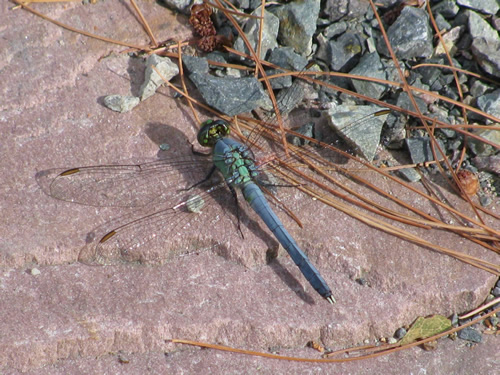
Observer: Vin Zollo
Observation Date: 6/15/13
Observation Time: 4:13 p.m.
Observation Location: Power line cut along Moose Hill St.
Common Name: Delta-spotted Spiketail dragonfly
Scientific Name: Cordulegaster diastatops
Comments: This one is teneral (wings are shiny), meaning that it recently emerged into adult form. This dragonfly gets its name from the delta-shaped (i.e.triangular) marks along its abdomen.
More Information: iNaturalist.org
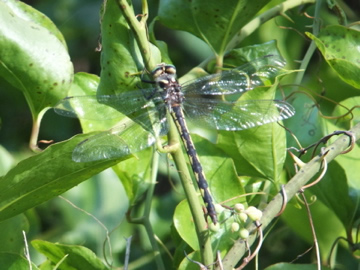
Observer: Josh Simons
Observation Date: 5/31/20
Observation Time: 2:00 p.m.
Observation Location: Moose Hill area
Common Name: Dot-tailed Whiteface dragonfly (female)
Scientific Name: Leucorrhinia intacta
Comments: The Dot-tailed Whiteface dragonfly (Leucorrhina intacta) is a member of the Skimmer family, Libellulidae. There are over a thousand species in this brightly-colored family gracing the skies worldwide. A tenth of those are native to North America, making Skimmers the largest American dragonfly family.
More Information: Greg Lasley Nature Photography and U. of Milwaukee
Observer: Paul Lauenstein
Observation Date: 6/7/10
Observation Time: 9:05 a.m.
Observation Location: Gavins Pond Dam
Common Name: Dot-tailed Whiteface dragonfly (male)
Scientific Name: Leucorrhinia intacta
Comments: This dragonfly is also among the dragonfly species commonly seen at Leach Pond in Borderland State Park.
More Information: Wikipedia
Observer: Paul Lauenstein
Observation Date: 8/17/11
Observation Time: 12:10 p.m.
Observation Location: Gavins Pond Dam
Common Name: Eastern Amberwing dragonfly (female)
Scientific Name: Perithemis tenera
Comments: The wings of the male are entirely amber, whereas the wings of the female are clear with amber blotches.
More Information: Project Noah
Observer: Paul Lauenstein
Observation Date: 7/15/13
Observation Time: 3:10 p.m.
Observation Location: Gavins Pond area
Common Name: Eastern Amberwing dragonfly (male)
Scientific Name: Perithemis tenera
Comments: This red-winged dragonfly is smaller than most other dragonflies.
More Information: Odonata Central
Observer: Paul Lauenstein
Observation Date: 7/17/10
Observation Time: 9:40 a.m.
Observation Location: Gavins Pond Road
Common Name: Eastern Amberwing dragonfly (male)
Scientific Name: Perithemis tenera
Comments: The wings of the male are entirely amber, whereas the wings of the female are clear with amber blotches.
More Information: Odonata Central
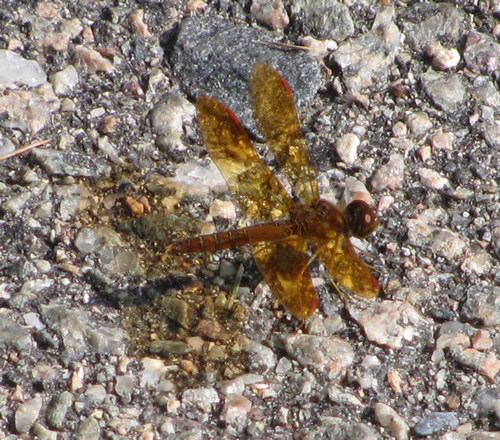
Observer: Paul Lauenstein
Observation Date: 7/6/11
Observation Time: 4:30 p.m.
Observation Location: field near Gavins Pond
Common Name: Halloween Pennant dragonfly
Scientific Name: Celithemis eponina
Comments: This is one of my best wildlife photos. The late afternoon sunlight provided perfect illumination.
More Information: Wikipedia
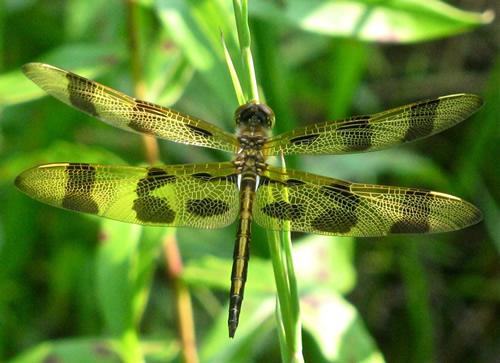
Observer: Paul Lauenstein
Observation Date: 8/26/11
Observation Time: 12:30 p.m.
Observation Location: near Gavins Pond soccer field parking lot
Common Name: Halloween Pennant dragonfly
Scientific Name: Celithemis eponina
Comments: Tattered wings reflect the wear and tear of summer in this late August photo.
More Information: Wikipedia
Observer: Paul Lauenstein
Observation Date: 5/19/19
Observation Time: 8:00 a.m.
Observation Location: Moose Hill Audubon Wildlife Sanctuary
Common Name: Harlequin Darner dragonfly
Scientific Name: Gomphaeschna furcillata
Comments: The Harlequin Darner is a member of the Aeshnidae family of dragonflies. The species occurs across much of the eastern United States and parts of southeast Canada. Its range extends to eastern Texas.
I encountered this specimen by chance on the pavement in the Moose Hill Audubon parking lot after a morning spent bird watching.
More Information: Bugguide.net
Observer: Paul Lauenstein
Observation Date: 6/2/20
Observation Time: 1:15 p.m.
Observation Location: Moose Hill Farm (TTOR)
Common Name: Harlequin Darner dragonfly
Scientific Name: Gomphaeschna furcillata
Comments: The Harlequin Darner is a member of the Aeshnidae family of dragonflies. The species occurs across much of the eastern United States and parts of southeast Canada. Its range extends to eastern Texas.
Harlequin darners resemble taper-tailed dragonflies. The pale 7-shaped mark on the side of abdominal segment 2 is diagnostic of female Harlequin Darner. Female Taper-tailed has a dark inverted J-shaped mark instead.
I encountered this specimen by chance on a low bush as I was walking back to my car after a morning spent bird watching.
More Information: Walter Sanford’s photoblog
Observer: Paul Lauenstein
Observation Date: 6/9/20
Observation Time: 1:30 p.m.
Observation Location: field near Gavins Pond dam
Common Name: Harlequin Darner dragonfly (male)
Scientific Name: Gomphaeschna furcillata
Comments: The Harlequin Darner is a member of the Aeshnidae family of dragonflies. This species occurs across much of the eastern United States and parts of southeast Canada. Its range extends to eastern Texas.
Harlequin darners resemble taper-tailed darners. The pale 7-shaped mark on the side of abdominal segment 2 is diagnostic of female Harlequin Darner. Female Taper-tailed darners have a dark inverted J-shaped mark instead. See: https://www.marylandbiodiversity.com/viewSpecies.php?species=680.
I got help identifying this specimen from Bugguide.net. If you register (it’s free), they will help you identify your photos of insects and spiders.
More Information: Walter Sanford’s photoblog
Observer: Paul Lauenstein
Observation Date: 5/24/11
Observation Time: 4:10 p.m.
Observation Location: Gavins Pond
Common Name: Lancet Clubtail dragonfly (male)
Scientific Name: Gomphus exilis
Comments: Male lancet clubtails have claspers at the end of the abdomen, which females lack. Lancet clubtails are common in Massachusetts near slow streams and ponds.
The name lancet comes from the dagger-shaped marking on the abdomen. The
clubtail moniker comes from the swelling of the posterior abdomen (males only).
More Information: Prince William Conservation Alliance
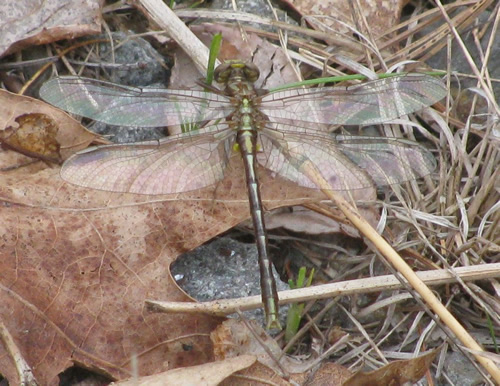
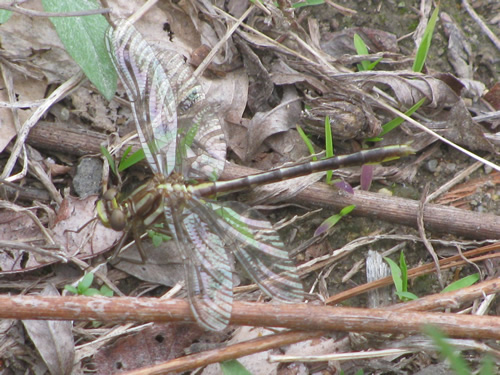
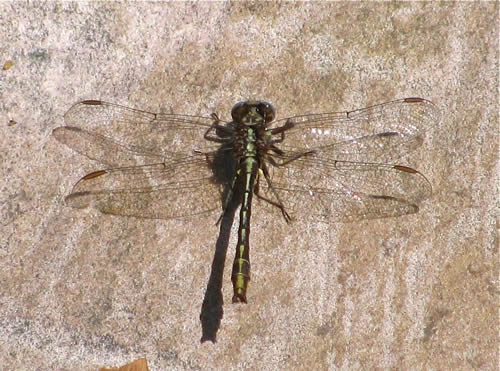
Observer: Paul Lauenstein
Observation Date: 6/19/13
Observation Time: 2:05 p.m.
Observation Location: Gavins Pond Dam
Common Name: Lancet Clubtail dragonfly (male)
Scientific Name: Gomphus exilis
Comments: Once you’ve learned all the birds, you can take up the challenge of learning the dragonflies. Start by getting a book like this one: https://www.amazon.com/Dragonflies-Damselflies-Princeton-Field-Guides/dp/0691122830
More Information: Wikipedia
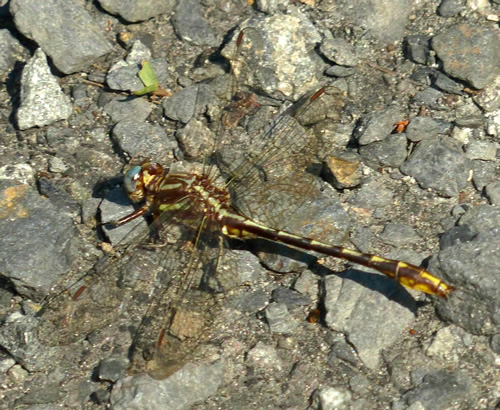
Observer: Paul Lauenstein
Observation Date: 5/21/19
Observation Time: 12:15 p.m.
Observation Location: 4 Gavins Pond Road
Common Name: Painted Skimmer dragonfly
Scientific Name: Libellula semifasciata
Comments: Painted Skimmers live up to their name, and the wings especially glow with color. A rich brown, the thorax has two whitish to yellow diagonal stripes on each side. The abdomen has yellow edges and a jagged black central stripe on the last few segments. The wings are marked with a brown streak at the base and brown spots at the middle and near the end. The veins along the front of each wing and at the base of the hindwings are largely yellow.
Painted Skimmer dragonflies are considered to be migratory. Some Painted Skimmers appear in spring in the northern states and extreme southern Canada before they would have emerged locally, presumably migrants. They have also been observed in autumn along the northeast coast in apparent directional flight.
More Information: Migratory Dragonfly Partnership
Observer: Paul Lauenstein
Observation Date: 5/27/19
Observation Time: 5:00 p.m.
Observation Location: on a bluff under high tension wires near S. Walpole St.
Common Name: Painted Skimmer dragonfly
Scientific Name: Libellula semifasciata
Comments: Painted Skimmers live up to their name, and the wings especially glow with color. A rich brown, the thorax has two whitish to yellow diagonal stripes on each side. The abdomen has yellow edges and a jagged black central stripe on the last few segments. The wings are marked with a brown streak at the base and brown spots at the middle and near the end. The veins along the front of each wing and at the base of the hindwings are largely yellow.
Painted Skimmer dragonflies are considered to be migratory. Some Painted Skimmers appear in spring in the northern states and extreme southern Canada before they would have emerged locally, presumably migrants. They have also been observed in autumn along the northeast coast in apparent directional flight.
More Information: Migratory Dragonfly Partnership
Observer: Josh Simons
Observation Date: 6/21/22
Observation Time: 11:50 a.m.
Observation Location: Moose Hill area
Common Name: Painted Skimmer dragonfly
Scientific Name: Libellula semifasciata
Comments: Painted Skimmers live up to their name, and the wings especially glow with color. A rich brown, the thorax has two whitish to yellow diagonal stripes on each side. The abdomen has yellow edges and a jagged black central stripe on the last few segments. The wings are marked with a brown streak at the base and brown spots at the middle and near the end. The veins along the front of each wing and at the base of the hindwings are largely yellow.
Painted Skimmer dragonflies are considered to be migratory. Some Painted Skimmers appear in spring in the northern states and extreme southern Canada before they would have emerged locally, presumably migrants. They have also been observed in autumn along the northeast coast in apparent directional flight.
More Information: Migratory Dragonfly Partnership
Observer: Paul Lauenstein
Observation Date: 6/9/13
Observation Time: 3:10 p.m.
Observation Location: Gavins Pond area
Common Name: Painted Skimmer dragonfly
Scientific Name: Libellula semifasciata
Comments: This dragonfly is said to be uncommon, although it is not listed as such in Massachusetts.
More Information: iNaturalist
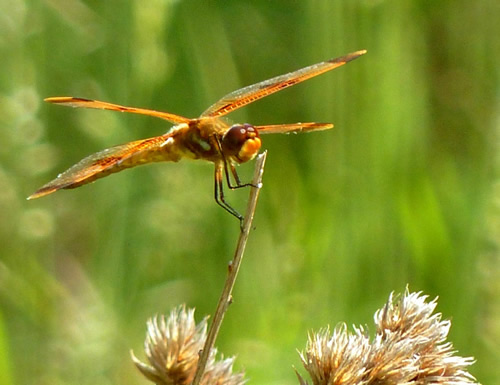
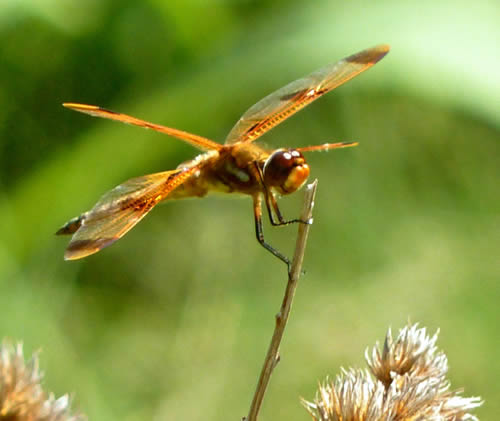
Observer: Paul Lauenstein
Observation Date: 6/9/12
Observation Time: 3:15 p.m.
Observation Location: Gavins Pond area
Common Name: Painted Skimmer dragonfly (female)
Scientific Name: Libellula semifasciata
Comments: This dragonfly is said to be uncommon, although it is not listed as such in Massachusetts. A map showing Painted Skimmer sightings can be viewed at: https://www.inaturalist.org/taxa/104585-Libellula-semifasciata
More Information: Walter Sanford’s Photoblog
Painted Skimmer ovipositing: https://www.youtube.com/watch?v=5_XyMkvXtfI
Observer: John Baur
Observation Date: 5/10/23
Observation Time: 12:04 p.m.
Observation Location: Moose Hill Farm (TTOR). The exact location can be seen here: https://www.inaturalist.org/observations/160951954
Common Name: Ringed Boghaunter dragonfly
Scientific Name: Williamsonia lintneri
Comments: The aquatic nymphs of the ringed boghaunter lives underwater for over a year. In late April to early May they are one of the first dragonflies to emerge from the water as a winged adult. Adults spend most of their time in woodlands basking in the sun and looking for small insects on which to feed.
More Information: Mass.gov
Observer: Paul Lauenstein
Observation Date: 7/26/10
Observation Time: 6:45 a.m.
Observation Location: Gavins Pond Road
Common Name: Ruby Meadowhawk dragonfly
Scientific Name: Sympetrum rubicundulum
More Information: Wikipedia
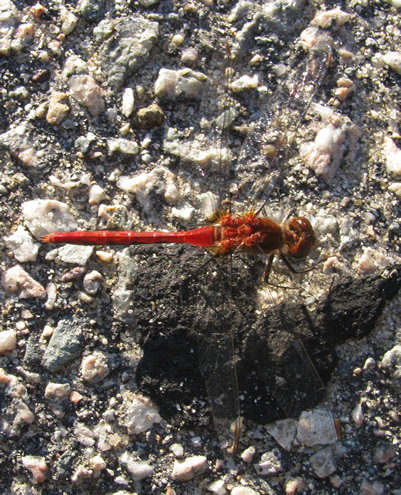
Observer: Paul Lauenstein
Observation Date: 6/22/23
Observation Time: 11:00 a.m.
Observation Location: Gavins Pond
Common Name: Slaty Skimmer dragonfly (immature male)
Scientific Name: Libellula incesta
Comments: This is an immature male. Click HERE to learn how to tell the differences among male, female and immature slaty skimmers.
More Information: Odonata.bogfoot.net
Observer: Paul Lauenstein
Observation Date: 6/2/11
Observation Time: 2:50 p.m.
Observation Location: Gavins Pond
Common Name: Slaty Skimmer dragonfly
Scientific Name: Libellula incesta
Comments: The first photo is a female. The second is a male.
Watch this video of the slaty skimmer dragonfly as it oviposits at Gavins Pond.
More Photos: Odonata.bogfoot.net
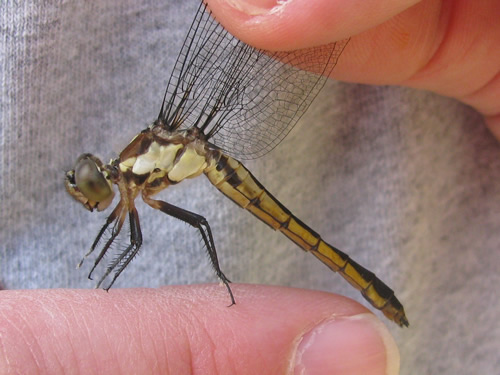
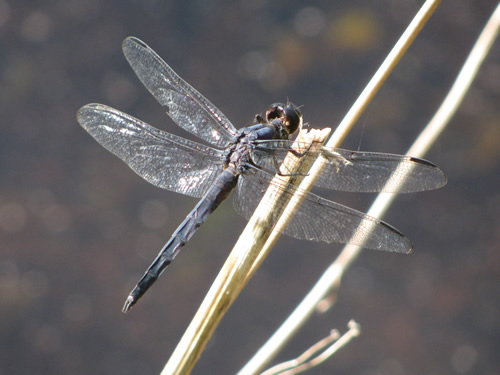
Observer: Josh Simons
Observation Date: 6/14/20
Observation Time: 11:30 a.m.
Observation Location: Moose Hill area
Common Name: Slaty Skimmer dragonfly (female)
Scientific Name: Libellula incesta
Comments: Watch this video of the slaty skimmer dragonfly as it oviposits at Gavins Pond.
More Photos: Odonata.bogfoot.net
Observer: Paul Lauenstein
Observation Date: 5/19/12
Observation Time: 5:40 p.m.
Observation Location: dirt road leading to Gavins Pond Dam
Common Name: Spangled skimmer dragonfly (female)
Scientific Name: Libellula cyanea
Comments: This photo is a female. Male spangled skimmers are slate blue. Hence the species name “cyanea” which refers to its cyan (blue) coloration.
Identifying dragonflies and damselflies is fun. Get a copy of A Field Guide to the Dragonflies and Damselflies of Massachusetts by Blair Nikula, Jennifer L. Loose, and Matthew R. Burne.
More Information: Dragonflies and Damselflies of NJ
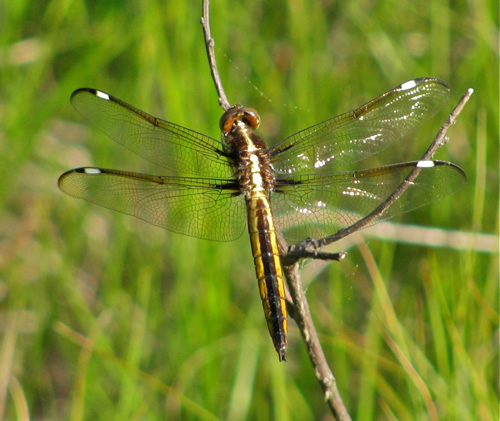
Observer: Paul Lauenstein
Observation Date: 6/17/13
Observation Time: 4:00 p.m.
Observation Location: Gavins Pond Dam
Common Name: Spangled Skimmer dragonfly (male)
Scientific Name: Libellula cyanea
Comments: Males of this species are blue, while females are brown. Both have striking white and black stigmas on their wings. No other dragonfly in the Northeast has white stigmas on its wings. Males are territorial.
More Information: Dragonflies and Damselflies of NJ
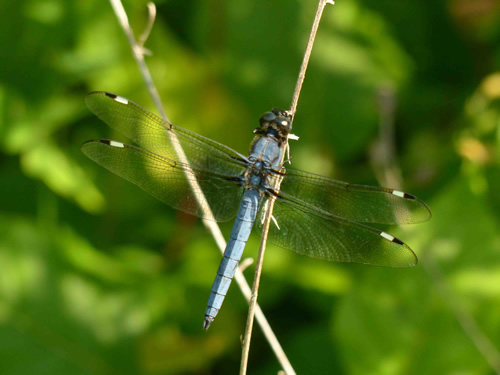
Observer: Paul Lauenstein
Observation Date: 7/7/18
Observation Time: 12:35 p.m.
Observation Location: Moose Hill Farm (TTOR)
Common Name: Twelve-spotted Skimmer dragonfly (female)
Scientific Name: Libellula pulchella
Comments: This species of dragonfly is relatively large. Lots of different species of dragonflies live in Sharon. Can you find one that’s not already recorded on this web site?
More Information: Ecobirder
Observer: Paul Lauenstein
Observation Date: 7/30/13
Observation Time: 3:35 p.m.
Observation Location: Gavins Pond Road near soccer fields
Common Name: Twelve-spotted Skimmer dragonfly (female)
Scientific Name: Libellula pulchella
Comments: This species of dragonfly is relatively large. Lots of different species of dragonflies live in Sharon. Can you find and phoyograph one that’s not already recorded on this web site?
More Information: Ecobirder
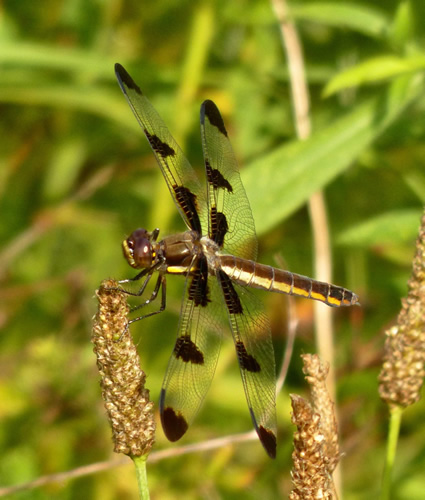
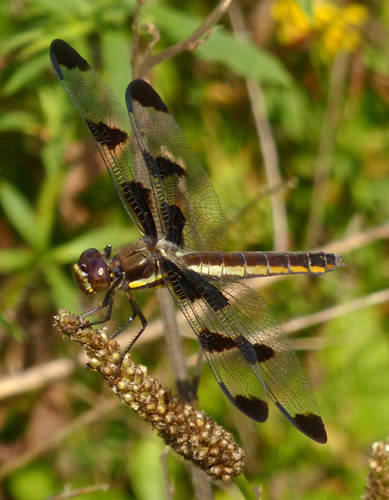
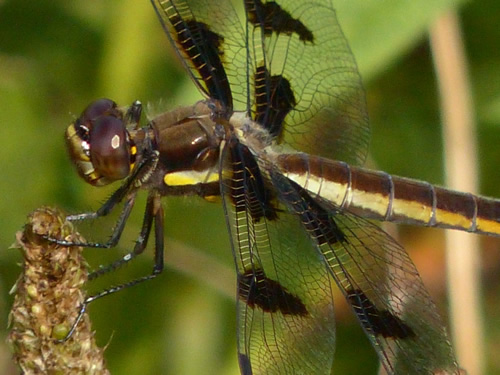
Observer: Paul Lauenstein
Observation Date: 5/29/10
Observation Time: 3:15 p.m.
Observation Location: Gavins Pond
Common Name: White Corporal dragonfly
Scientific Name: Libellula (Ladona) exusta
Comments: Small, most commonly perches on the ground. Adult males have a white abdomen.
More Information: New Jersey Odes
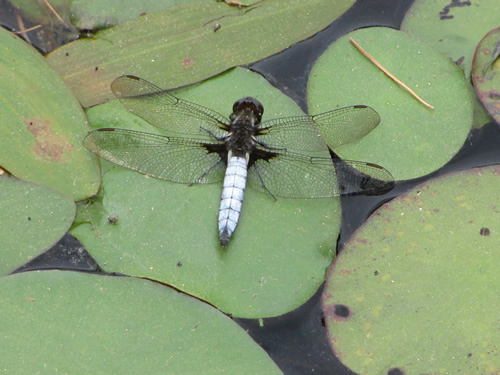
Observer: Vin Zollo
Observation Date: 6/15/13
Observation Time: 3:45 p.m.
Observation Location: Moose Hill Audubon Wildlife Sanctuary
Common Name: White Corporal dragonfly
Scientific Name: Ladona exusta
Comments: Small, most commonly perches on the ground. Adult males have a white abdomen.
More Information: New Jersey Odes
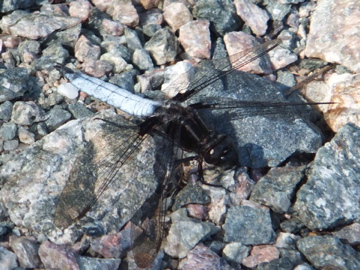
Observer: Paul Lauenstein
Observation Date: 5/25/11
Observation Time: 12:25 p.m.
Observation Location: Gavins Pond
Common Name: White Corporal dragonfly (female)
Scientific Name: Libellula (Ladona) exusta
Comments: The pale rusty abdomen indicates this is a young female. Older females have a drab white abdomen more similar to the males.
Found in fields and clearings near water. White corporals inhabit the northeast coastal plain into SE Canada. Fairly common in MA.
Males are territorial.
More Information: New Jersey Odes
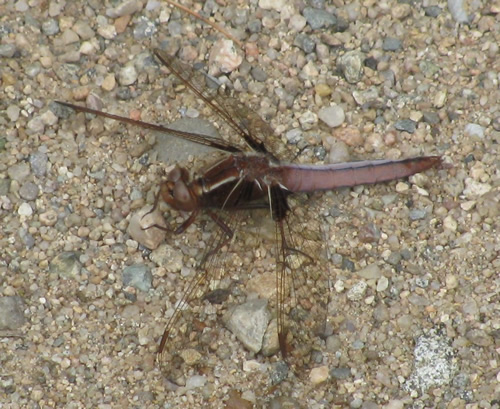
Observer: Paul Lauenstein
Observation Date: 5/26/14
Observation Time: 12:10 p.m.
Observation Location: Borderland State Park
Common Name: White Corporal dragonfly (female)
Scientific Name: Libellula (Ladona) exusta
Comments: Dragonflies eat insects. That’s a good thing because bat populations have plummeted due to a mysterious disease called white-nose.
More Information: White corporal dragonfly
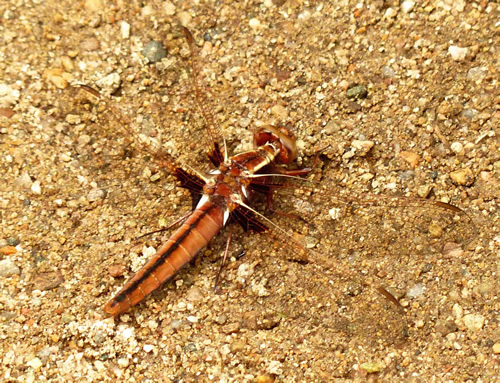
Observer: Paul Lauenstein
Observation Date: 7/8/13
Observation Time: 5:40 p.m.
Observation Location: Gavins Pond area
Common Name: White-faced Meadowhawk dragonfly
Scientific Name: Sympetrum obtrusum
Comments: Males are red. Very similar to Ruby Meadowhawk and Cherry-faced Meadowhawk. This species seems to be in decline.
More Information: Nature Search
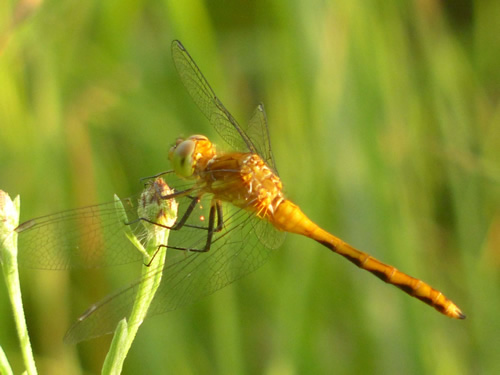
Two more photos taken 7/19/13 at about 5:30 where Turning Mill Brook flows under Wolomolopoag Street:
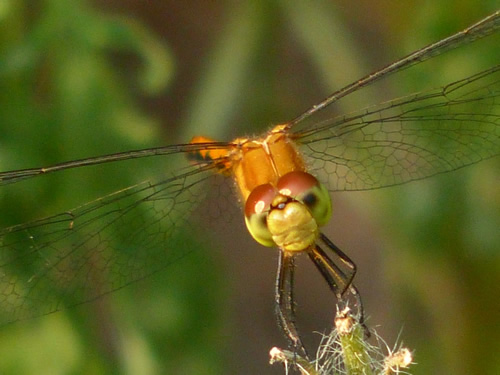
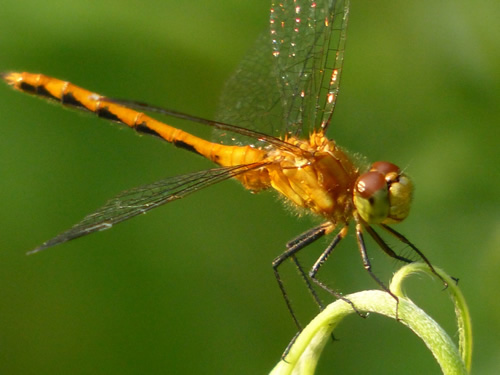
Observer: Paul Lauenstein
Observation Date: 8/11/12
Observation Time: 11:30 a.m.
Observation Location: Gavins Pond Road bridge over Billings Brook
Common Name: White-faced Meadowhawk dragonfly
Scientific Name: Sympetrum obtrusum
Comments: Adult males are identifiable by a distinctive pure white face and red body. Juveniles and younger females have a yellow abdomen. Older females have olive-brown or reddish-brown abdomen.
More Information: Wikipedia
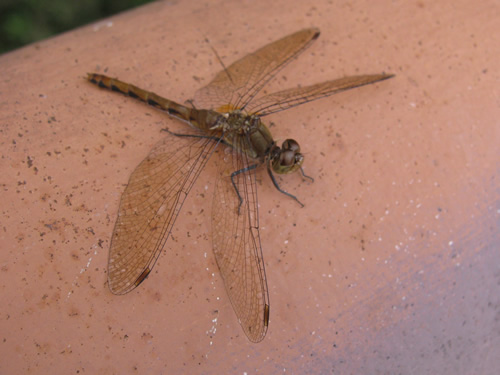
Observer: Paul Lauenstein
Observation Date: 8/15/18
Observation Time: 1:15 p.m.
Observation Location: Moose Hill Audubon Wildlife Sanctuary
Common Name: White-faced Meadowhawk dragonfly (male)
Scientific Name: Sympetrum obtrusum
Comments: Juveniles and females have yellow abdomens. Males are red. Similar to Ruby Meadowhawk and Cherry-faced Meadowhawk, but white-faced meadowhawks have a distinctive white face.
More Information: Wikipedia
Observer: Paul Lauenstein
Observation Date: 8/4/17
Observation Time: 1:55 p.m.
Observation Location: 4 Gavins Pond Road
Common Name: White-faced Meadowhawk dragonfly
Scientific Name: Sympetrum obtrusum
Comments: Juveniles and females have yellow abdomens. Males are red. Similar to Ruby Meadowhawk and Cherry-faced Meadowhawk, but white-faced meadowhawks have a distinctive white face.
More Information: Wikipedia
Observer: Paul Lauenstein
Observation Date: 7/3/10
Observation Time: 8:05 a.m.
Observation Location: near Gavins Pond
Common Name: Widow Skimmer dragonfly
Scientific Name: Libellula luctuosa
Comments: Odonates (dragonflies) are completely harmless – they do not sting or bite. Indeed, they are beneficial in the same way spiders and other predators are beneficial – they keep the burgeoning insect population in check.
More Information: North American Insects and Spiders
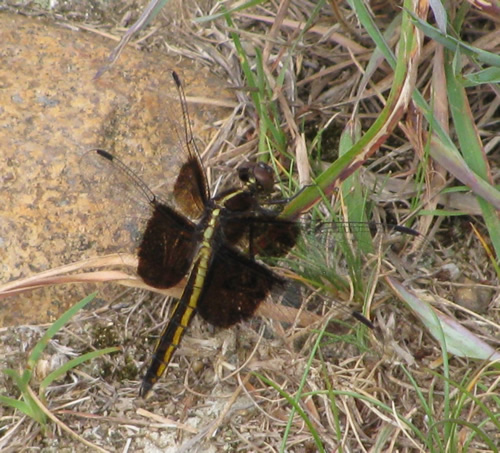
Observer: Paul Lauenstein
Observation Date: 7/31/11
Observation Time: 3:45 p.m.
Observation Location: Gavins Pond Road
Common Name: Widow Skimmer dragonfly
Scientific Name: Libellula luctuosa
Comments: The widow skimmer is famous for its pruinosity – the white, waxy coating on the dragonfly’s wings and abdomen. Dragonflies have excellent eyesight. Their compound eyes have up to 30,000 facets, each of which is a separate light-sensing organ or ommatidium, arranged to give nearly a 360° field of vision.
More Information: CirrusImage
